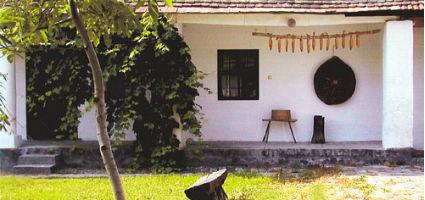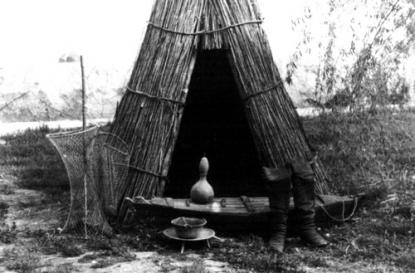2024. November 25. Monday
Fisher House - Báta
 |
Address: 7149, Báta Óvoda u. 6.
Phone number: (20) 576-4130
E-mail: batai.tajhaz@gmail.com
Opening hours: A múzeum egész évben csak előzetes bejelentkezés alapján látogatható.
|
Museum tickets, service costs:
|
Ticket for adults
|
300 HUF
|
|
|
Ticket for students
|
150 HUF
|
|
|
Ticket for children
|
150 HUF
|
Báta is the village in the Sárköz furthest to the South. Sárköz (Mud Place) was made 'muddy' by the river Danube in the first place and the rivers Sárvíz and Báta in the second place. The Danube was flowing all around the place in the past centuries. The area is still full of the old riverbeds without water now. The original river was the Sárvíz now flowing North of Szekszárd. It flew in the Danube at Báta. The river Pösze also played important part in forming the area. The village Bátatő was situated at the mouth of the river. The people of the area were involved in fishing. After the regulation of the Danube this lifestyle vanished. In the old times, fishing flourished since the area was abound with wild waters. The people of Báta loved to fish around the Old Danube and the Little Danube flowing right at the outskirts of the village.

The people of the village where I was born were not satisfied with the fishing places around the village and went to fish to places like Rezét, Cserta, Sáros, the Dead Danube in Nyék around Baja. It was impossible to come and go the same day in a boat so the fishermen built temporary shacks. They visited their families every second week.
The food brought from home and the fresh fish was cooked in the open in small cauldrons. The food was served in wooden dish. Fish was always sold alive. Women went to the shacks every second day for the fish and took it to the market. The visitors of our exhibition may learn of the lifestyle of the fishermen, their tools and the different kinds of fish.

The people of the village where I was born were not satisfied with the fishing places around the village and went to fish to places like Rezét, Cserta, Sáros, the Dead Danube in Nyék around Baja. It was impossible to come and go the same day in a boat so the fishermen built temporary shacks. They visited their families every second week.
The food brought from home and the fresh fish was cooked in the open in small cauldrons. The food was served in wooden dish. Fish was always sold alive. Women went to the shacks every second day for the fish and took it to the market. The visitors of our exhibition may learn of the lifestyle of the fishermen, their tools and the different kinds of fish.
